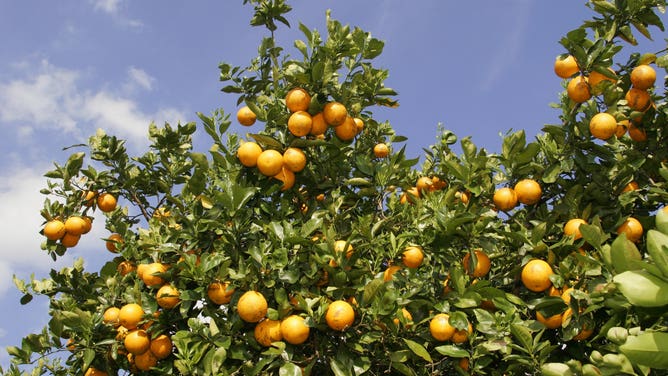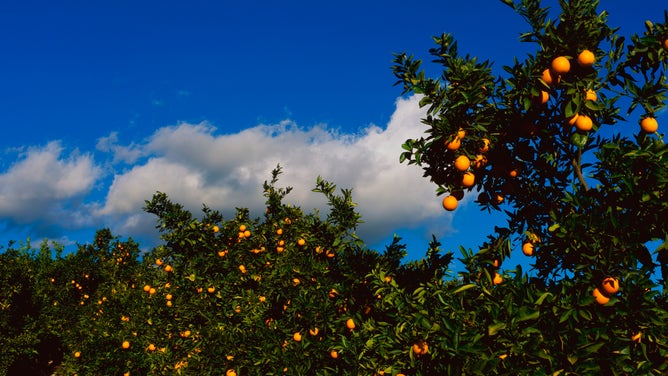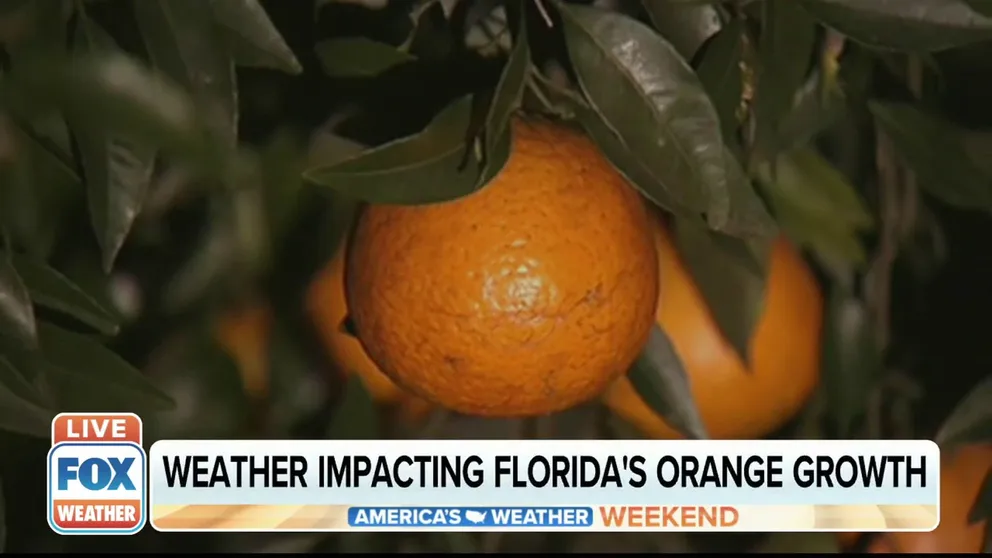Bacterial disease drops Florida's orange crop to smallest in 75 years
A bacterial disease is putting the squeeze on the Florida orange crop. Consumers fear price hikes.
Florida orange production sees smallest crop in more than 75 years
The Department of Agriculture says Florida is on pace to produce 44.5 million boxes of oranges during the current season, which is the smallest crop in more than 75 years.
Florida is on pace to harvest a mere 44.5 million boxes of oranges this season, according to the Department of Agriculture (USDA). That is not even a third of the crop that was harvested in the 2010-2011 season and only a fifth of the crop harvested in the 2001-2002 season.
"It is caused by a bacterial disease called Citrus Greening," said Matt Joyner, Legislative Director of the trade group Florida Citrus Mutual. "Our trees are almost a hundred percent infected by this bacteria, and it just diminishes their production significantly."
"The trees are still producing good fruit, but it's much less of it, and that's what's ultimately causing a much lower supply," he said. Orchards that historically produced 500-600 boxes per acre are only yielding 225 boxes per acre.

(Photo by: Jeff Greenberg/Universal Images Group via Getty Images / FOX Weather)
"Certainly the consumers are going to see the price increases just based on simple supply and demand," Joyner admitted.
"We believe it came in probably through a southern port in Florida somewhere in the early 2000s. We found it in 2005," continued Joyner.
Florida orange production dropped precipitously since the introduction of Citrus Greening which is spread by the invasive insect, the Asian citrus psyllid. The USDA lists the disease as one of the most serious citrus plant diseases in the world.
Florida orange crop’s decline since the estimated introduction of bacteria:
- 44.5 million boxes - estimated 2021-2022 crop
- 140.3 million boxes - 2010-2011 crop
- 230.0 million boxes - 2001-2002 crop
The disease-infected insect likely spread across the state by hurricane winds and other storms.
The insects feed on new trees. And the bacteria attacks the tree’s vascular system. "It ultimately keeps the tree from getting the nutrients that it needs to stay healthy and to grow a good crop of citrus, said Joyner.
No known cure
There is no known cure and the USDA reports that pesticides have little effect on the spread of the disease. The insects are even becoming less susceptible to some insecticides.
"We've made a lot of progress in finding therapies and certainly better nutrition to keep our trees alive and productive longer," said Joyner about current research. "But we have yet to come across that silver bullet, that cure."

(Photo by: Joe Sohm/Visions of America/Universal Images Group via Getty Images / FOX Weather)
"It’s likely we'll have to ultimately replace our current inventory of trees," added Joyner. "And we're starting to replace the current inventory of sick trees now with greening resistant trees."
Breeding research has developed trees that are resistant to Citrus Greening but not immune.
Most citrus trees are in jeopardy. The USDA has found the insects from Louisiana to South Carolina, California, Hawaii, Texas and Puerto Rico.
